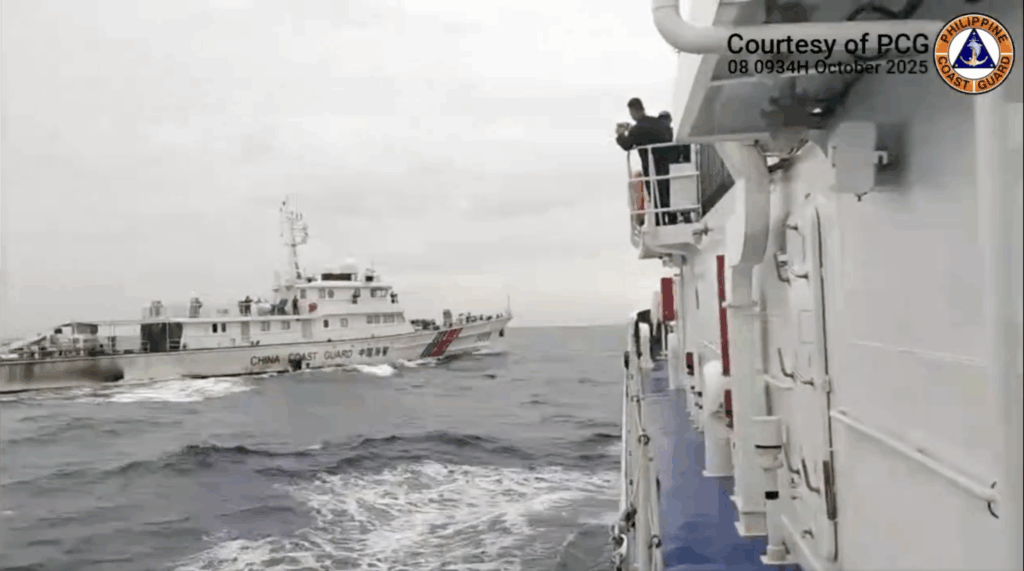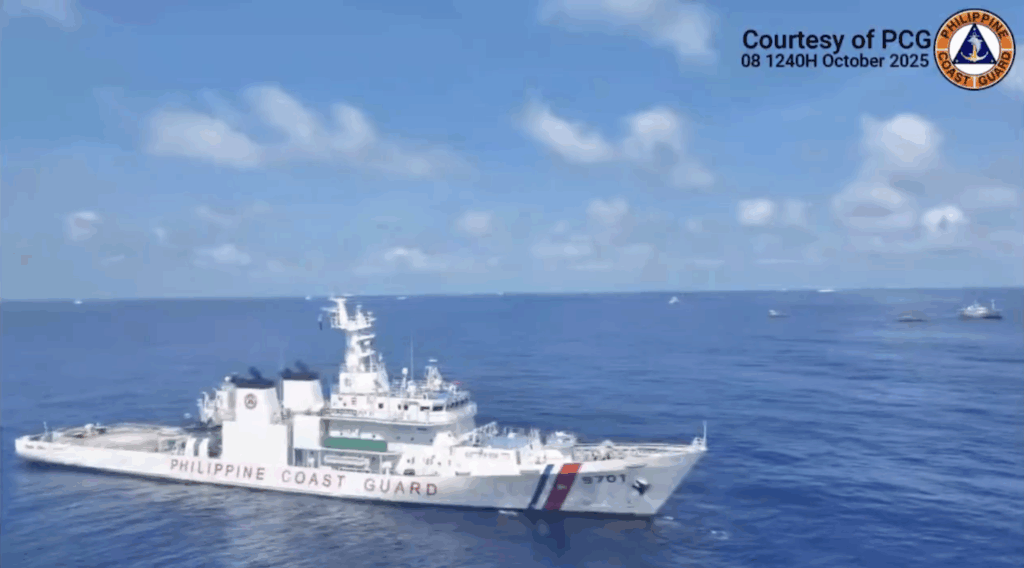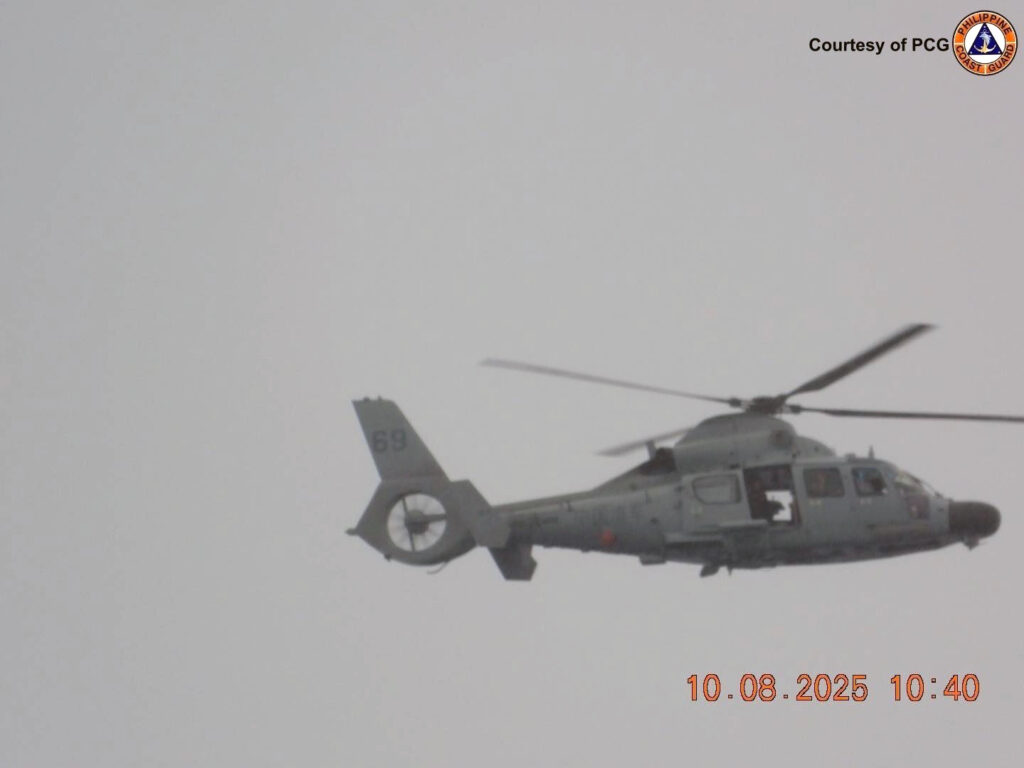Coast Guard Resupplies Fishermen in the South China Sea Despite Chinese Harassment



A People’s Liberation Army Z-9 utility helicopter made low-altitude monitoring flights Oct. 7, 2025, as the Philippine Coast Guard provided supplies to local fishermen near the Sabina Shoal. (Philippine Coast Guard photo)
Manila provided supplies and protection to Philippine fishermen against a fleet of Chinese patrol ships, warships and aircraft operating in the South China Sea near two disputed maritime features on Tuesday.
The Philippine Coast Guard (PCG) and Bureau of Fisheries and Aquatic Resources (BFAR) dispatched a total of 15 cutters and offshore vessels early Tuesday to resupply and escort fishermen operating in the vicinity of the Scarborough and Sabina shoals, according to an agency press release. The assistance mission falls under the country’s Kadiwa Initiative, which aims to bolster Filipino fishery output in the disputed waters amid Chinese harassment and supply constraints.
The deployment included the country’s largest cutters, BRP Teresa Magbanua (MRRV-9701) and BRP Melchora Aquino (MRRV-9702).
Chinese forces responded by deploying 34 cutters and maritime militia vessels around the two shoals and engaged in “intimidation tactics,” according to the PCG. Footage from the PCG shows Chinese forces shadowing and closing in on the agency’s vessels.
Despite the Chinese presence, around 100 Philippine vessels received fuel, food and other supplies to extend their fishing operations in the South China Sea, reads the PCG’s news release.
“The Philippine Coast Guard, alongside our partners at BFAR, will never back down in defending the rights and livelihoods of our Filipino fishermen,” PCG Commandant Adm. Ronnie Gil Gavan said in the release.
The People’s Liberation Army Navy (PLAN) also deployed the Type 054A frigate Hengyang (568) to communicate a live-fire drill notice to the Philippine vessels near Scarborough, which reportedly caused concern among the Filipino fishermen gathering for resupply near Scarborough Shoal. This is the second instance in recent months of the Chinese military utilizing live-fire notifications against Philippine civilian fishermen, following a similar incident in September at Scarborough Shoal.
At Sabina Shoal, a Z-9 utility helicopter made low-altitude monitoring flights in order to intimidate the Kadiwa mission, according to the PCG. These PLAN aviation assets could be launched from the fleet’s warships or several artificial island bases Beijing has built off the Philippine coast. Sabina was previously the site of another standoff between the two nations last year, which saw Teresa Magbanua stationed at the shoal until a Chinese blockade forced the PCG flagship to withdraw.
Ben Lewis, a co-founder of PLATracker, an organization dedicated to monitoring Chinese military activity and development, told USNI News that China’s continued military involvement may lead to accidental escalation and miscalculation in the ongoing maritime dispute between the Philippines and China.
“Beijing’s decision to again use the threat of live-fire activities by the People’s Liberation Army in their effort to enforce their illegal territorial claim is concerning, as is the use of a PLA Navy helicopter to intimidate civilian fishermen,” Lewis said. “As the PRC increases the intensity of its activities – the risk of miscalculation, like the collision that occurred in August – or accidental escalation will grow at a commensurate rate.”
Tuesday’s encounter comes amid an intensified focus on Scarborough from the Philippines and China following a collision between Chinese naval vessels, Beijing’s national nature reserve claim and Philippine concerns of a Chinese seizure of the shoal.
The Philippine Department of Foreign Affairs reasserted Manila’s sovereignty over the shoal on the same day, noting that “some countries have been articulating an erroneous opinion that intentionally misreads certain treaties upon which the extent of Philippine territory is partly based.” (Aaron-Matthew Lariosa, USNI News)



